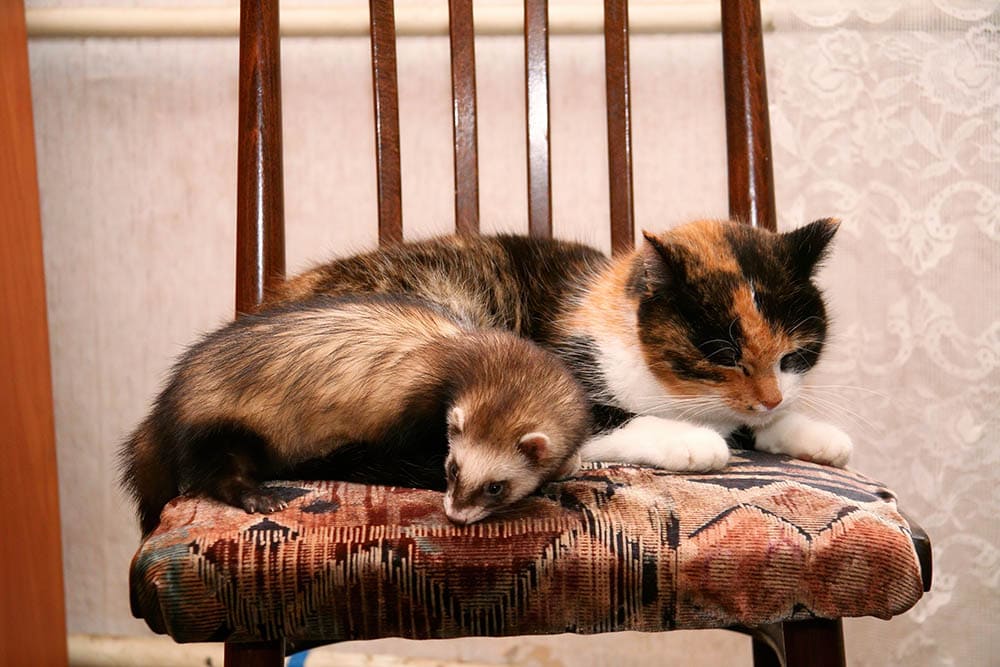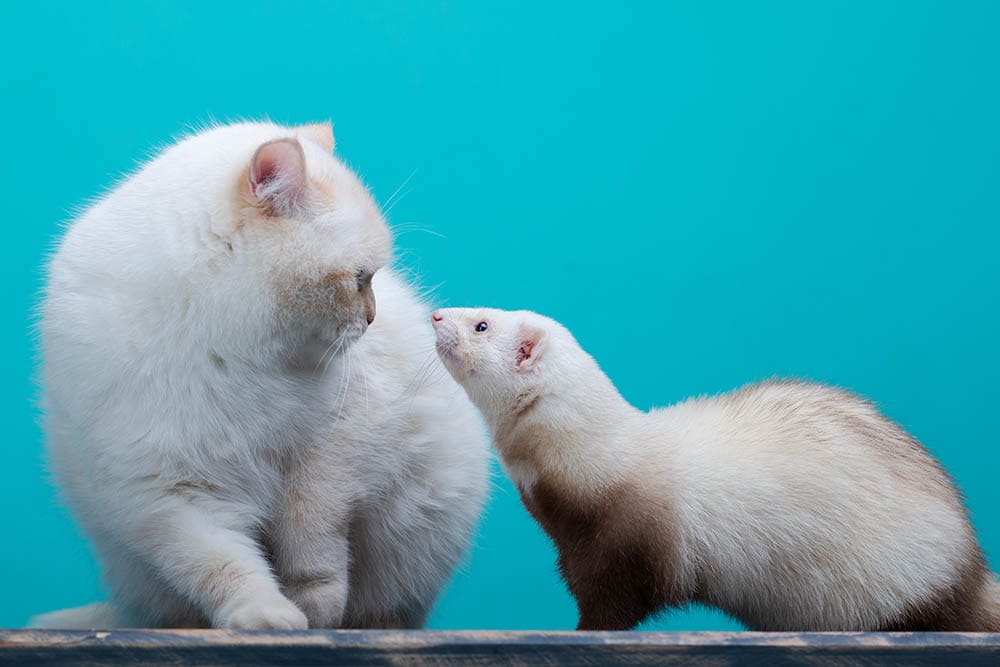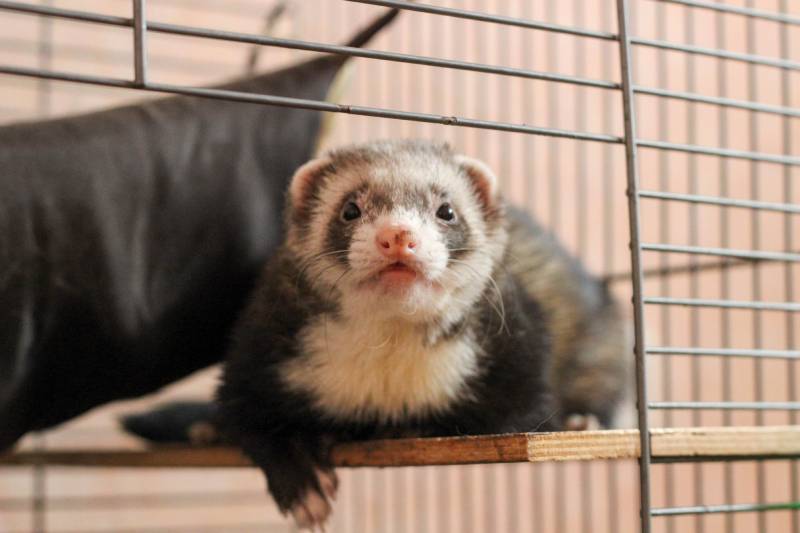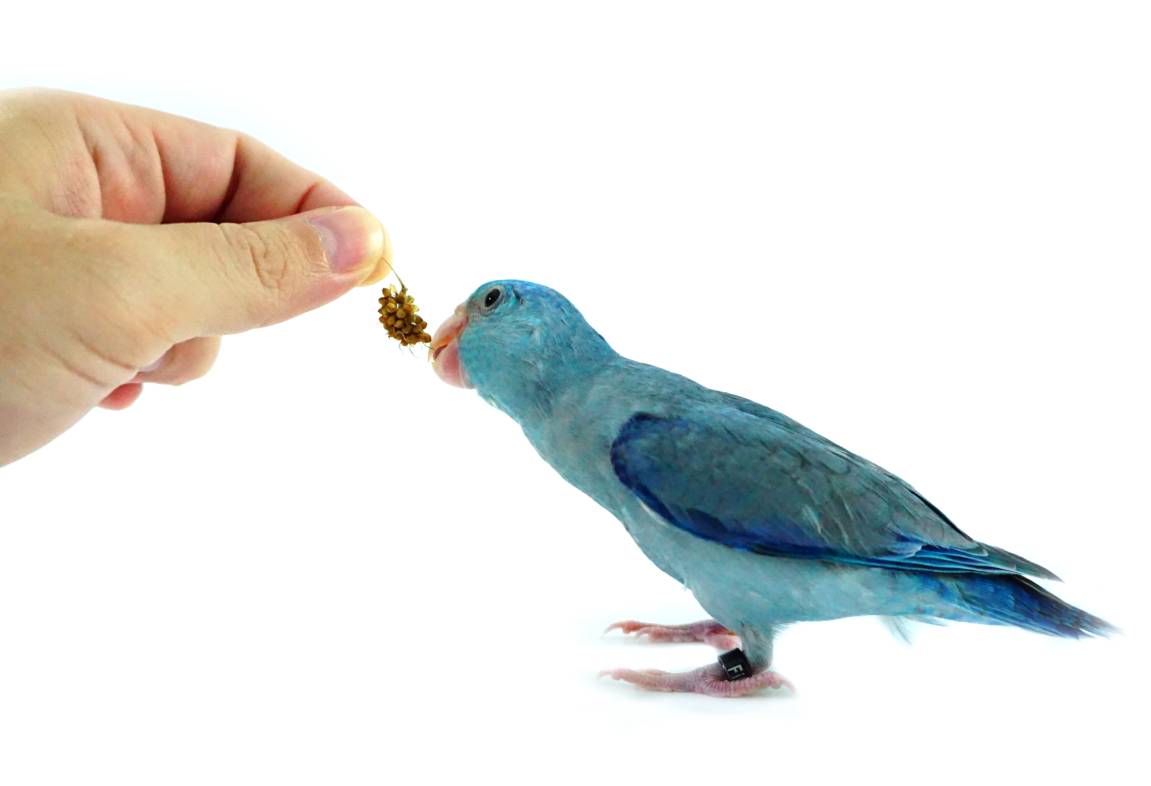VET APPROVED

The information is current and up-to-date in accordance with the latest veterinarian research.
Learn more »Click to Skip Ahead
Ferrets are social animals, and they love company. It is a great idea to get at least two ferrets or keep them in groups of up to four. Cats and ferrets can generally get along well because they are very similar animals, but it will also depend greatly on their individual characters and socialization. As both pets are predator species, it’s important to supervise their interactions at all times. Let’s take a look at the unique bond between these two bright and furry animals.

Cats and Ferrets Share Similar Traits
When you look at their nutrition and behavior, you will see many similarities between cats and ferrets. For example, cats and ferrets are both carnivores, meaning they should eat meat. Generally speaking, their nutritional requirements are similar.1
Another interesting trait they share is their hygiene. We don’t have to bathe cats or ferrets because they clean themselves. Also, both pets are clean animals and know how to use a litter box.
Based on these similar traits, we can see how they could live together without too much trouble. But, there are still rules we have to obey when introducing and allowing interaction between the two animals.

Introducing Cats and Ferrets
The best situation for the introduction of these two animals would be when both are young. That way, you can raise them together, and that strengthens their bond. Pets growing up together are often closer than those introduced later in life, and they can be more easily socialized at a younger age.
That doesn’t mean we can’t introduce an adult cat to an adult ferret. It is possible, but it has to be done in a controlled environment allowing plenty of time for the two animals to accept each other. It is important to be patient and take it one step at a time, not forcing the process, which may take weeks.
What to Consider Before Introductions
Not every circumstance is appropriate for introducing two animals, whether they are cats, ferrets, dogs, or other pets. Here are some of the aspects that require consideration:
Introducing an Old or Sick Pet
Owning an older cat or older ferret is a situation when it is better to reconsider putting these two together. It’s the same story with a seriously ill pet. We aren’t talking about common colds, we are talking about cancers and other difficult medical situations.
Introducing a sick or old pet to a new pet can cause stress to the sick one in particular. When a pet is old or ill, it is best for them to avoid any kind of stress, including the introduction of a new family member. If there is a chance that the pet will feel stressed, we recommend waiting before introducing them to a new family member.

Introducing Cats With High Prey Drive
Just like ferrets, cats can have a high prey drive. We can easily see that in a cat’s behavior. If a cat is constantly hunting small animals like mice and birds, stalking and pouncing, then the cat has a high prey drive. Due to the ferret’s size, some cats can try to attack a ferret simply because they are small enough to be considered prey. Although ferrets are very fast and can defend themselves with their teeth and nails, cats are still capable of injuring them, as well as getting injured by the ferret.
The good thing about ferrets is their musky odor that informs cats and other animals that they are not, in fact, prey, but unique, small predators, but a highly prey-driven cat may not care much about that.

The 5 Steps to Introducing Cats and Ferrets
A relationship between a cat and a ferret depends on their personalities. They can get along perfectly from the first minute, or they can learn to live next to one another after hours of intense encounters. The best outcome is when we combine ferrets and cats with similar, relaxed personalities. Still, as both species are predators, it’s important to always supervise all interactions between the two. That is why it is very important to follow the rules that can make any introduction run smoothly.
1. Start With Scent Exchange
Before starting the introduction process, it’s crucial that you perform something called scent exchange. This involves exchanging bedding or toys that one animal uses and placing them with the other, and vice versa. This allows them both to become familiar with each other’s scent, as well as to get used to it, accepting it as something normal and not threatening. When both pets are comfortable with objects or beds from the other animal, showing relaxed body language cues, then it’s time to move on to the next steps.

2. Use Neutral Ground
Ferrets and cats are both territorial pets, so to avoid unnecessary stress, the introduction should be on neutral ground. Neutral ground can be a room neither pet hangs out in, the backyard, or somewhere else. That way, cats or ferrets won’t feel the need to defend their territory from (in their mind) an intruder.
3. Initially, Only Allow Them to See Each Other
The best way to make first contact is through the cage, crate, or a glass door. One option is to leave the ferret in the crate and let the cat come closer to them, or vice versa. That way, it is easy to see the reactions of both pets. If there are no fearful or aggressive reactions (hissing, tail wagging, growling, etc.), allow this type of interaction for a few minutes at a time, several times per day.
Before letting animals meet like this, it is important to provide escapes for both. It is easier for the animal that is loose because they can simply jump to a higher position, for example, a chair nearby. However, for the animal in the crate, we have to provide them with something different. That can be a tunnel or a box big enough for them to enter, so they can seek shelter if they feel overwhelmed. Repeat the process on a daily basis, and swap the pets around, with one being in the crate one day, and the other the following. Slowly extend the amount of time they spend interacting like this in a controlled environment, until they are showing relaxed and calm behavior, or ignoring each other.
Reward and reinforce the desired behavior using praise and treats, so both animals associate the other with positive outcomes. Let them sniff each other through the crate and decide how close they want to get to the other pet. Don’t rush this step, as it will determine the success of the introduction, and repeat it as much as possible.

4. Keep Them at a Safe Distance
After the crate introduction goes well for at least a few days or even weeks, and you don’t hear any undesirable sounds or see any fearful physical reactions from either party, with both animals showing relaxed body language and lack of fear or excitement, you can slowly start to consider letting them both out. The best way to do this is to hold both animals at a safe distance, but without restricting them too much. One way is to use a harness and a lead on one or both pets, if they have been trained to wear one. You can also hold one pet, and a family member can hold the other. Let them sniff each other if they want to, but pull them away gently if you see a shift in their behavior towards a bad direction. Use toys to distract them from each other if their body language becomes uncertain.
5. Supervise Their Interactions at All Times
The last step is to see how they interact on their own with your constant supervision, but only if the previous steps were consistently successful. If there is any doubt about how they will behave around each other, it’s best to delay this step further and focus on reinforcing the previous steps. Still, even if everything is done the right way, some pets will just not get along, or will occasionally have outbursts that may lead to injuries. Be aware of this risk if you want to introduce the two pets. Alternatively, keep the animals separate and provide them each with everything they need, from exercise, affection, mental stimulation, and environmental enrichment.
If you allow your cat and ferret to interact under supervision, after completing the previous steps, watch their body language carefully. There will likely be sniffing and touching, maybe running around and playing, but abort the entire process if biting, scratching, hissing, or any other fearful behaviour happens. If it does, distract them with toys or noise, such as a loud clap, do not shout, separate them, and check if both pets are OK. Consider going back to the previous steps before trying this particular step.
In case of any uncertainties or issues, consult with your veterinarian or a certified animal behaviorist.

Signs of Mutual Affection
There are a few things animals do only when they are comfortable with other living beings. If your current pet eats, sleeps, plays, or simply hangs out with the other pet, then you are in the clear. If you can see them spending time together without chasing or ignoring each other, then you will know they are in the right place with their relationship. Still, supervise them for your own peace of mind and their safety, as accidents may still happen.


Final Thoughts
Ferrets and cats can often get along thanks to a number of their similarities. If you want to introduce your ferret to a new cat, or vice versa, keep the introduction calm, gradual and under control. It may take a few weeks or longer in some cases, but with proper introductions using positive reinforcement, you are likely to set a good basis for a long and trusting relationship. If you steer it the right way, you may create a couple of buddies in no time.
- See also: How to Introduce Two Cats to Each Other
Featured Image Credit: Jagodka, Shutterstock












